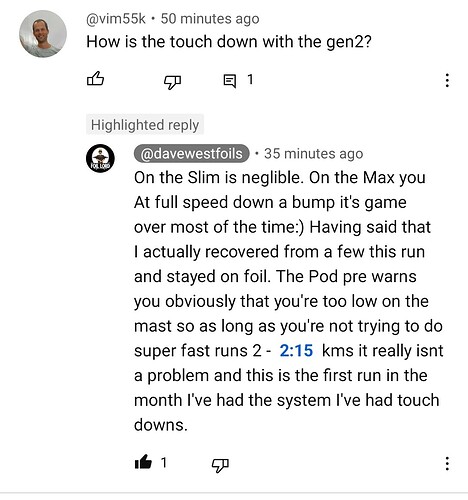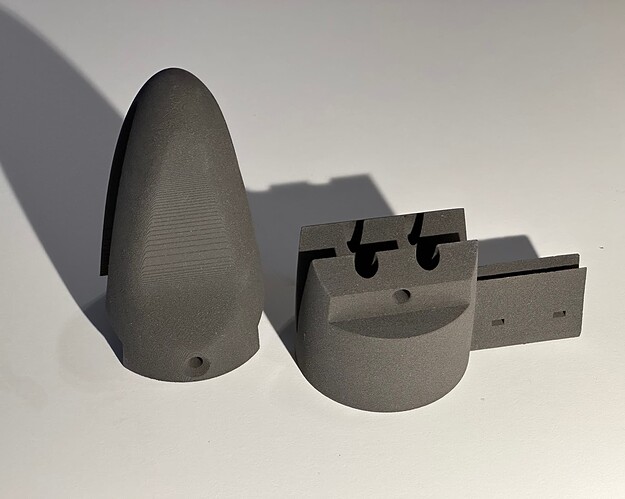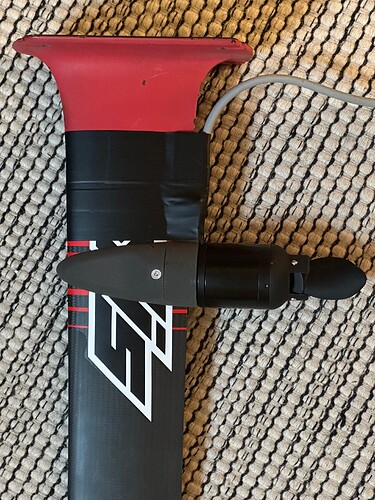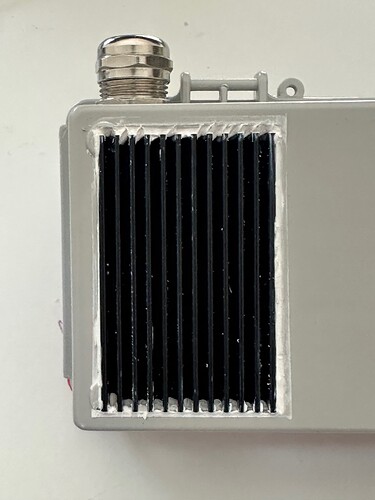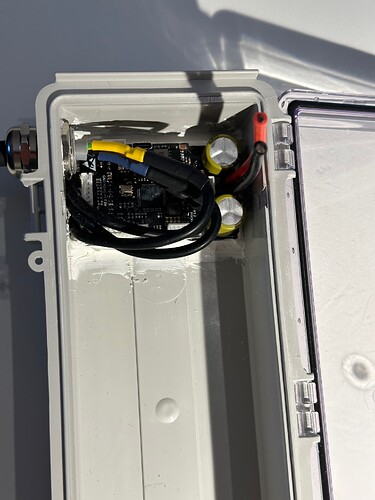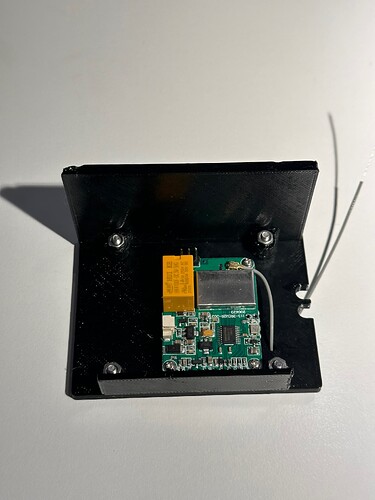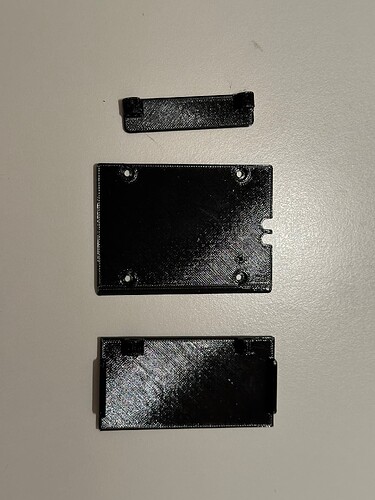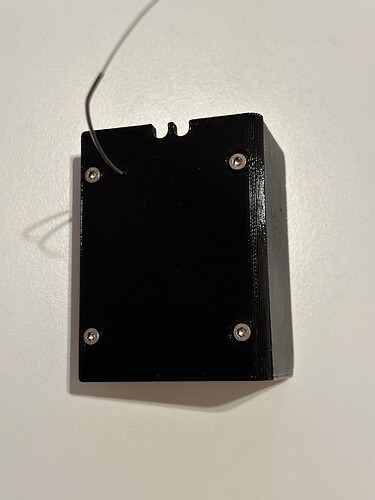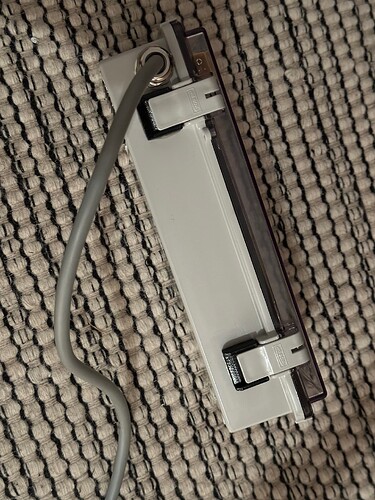Well actually pwrfoil and voltefoil are selling this solution (the under the board fixed battery) since long…so if foildrive gets a patent there it would be just as ridicolous as liftfoil got a general efoil patent ![]()
We can easily imagine that a four-month test and error period was necessary before applying to be sure it was worth it. That’s a total of two years (oct 2021 - oct 2023)…
There’s a podcast on YouTube where Jamie says he spent two years developing and testing samples. If he started this at the same time as learning Fusion 360, then why not.
Sorry for the rookie question. Ive been following this thread for months now. Does anyone have a link to a complete how to guide for waterproofing these 6384 motors? My first attempt i used too much epoxy around the windings on the wire hookup side of stator and now i cant get it back together. Trying to cut back some of the epoxy is sketchy without the risk of damaging the lacquered winding wires.
Id like to try again with a new motor but would love to study up on how others have done it sucessfully first. Thanks!
No need for epoxy coating, just soak in CorrosionX every 3-4 uses. In my opinion epoxy adds a layer of complexity - keep it simple.
You could try to use a lathe to remove the excess epoxy of the stator. Worked for me with the bell, had a bit too much on the inside.
If epoxy is needed depends on how good the winding is laquered, if there are any loose strands of wire then these are likely to develop metal fatigue breaks over time due to turbulence and cavitation inside the rotor bell. I’ve gotten this on two outrunners on my efoil.
Thanks for the information guys. For the next motor, I may just brush on a light coat of epoxy over the windings and then soak in corrosion X to protect the other bits. I will swap over bearings to ceramic of course.
Like a few others I have been working on a new foil assist system for between the mast and board. I have started to experiment with getting the signal to pass thru the carbon fiber board without an extended antenna on top of the board.
So far I have not been able to make it work 100 percent of the time. The signal gets very weak and has difficulty transmitting thru the board. I can get the signal to work 2 inches under saltwater but not also thru the carbon board.
My thought was maybe a raised section with the antenna in it that drops into the foil track boxes 20mm or so, that way at least 1 layer of carbon has already been passed.
Does anyone have any insight to how foil drive is making there setup have such a good signal?
Stuff the tracks with closed cell foam to allow the signal to pass.
It is 2.4ghz, right? You can try directional antenna and place it straight at the top of the box face up.
https://www.t9hobbysport.com/frsky-infinity-2.4ghz-directional-antenna
2.4Ghz WiFi Antenna
Interesting to test BREmote LR, I expect it to beat everything.
The best solution is to change frequency. In drone area we know this very very well with carbon frame. Use 868mhz make a lot of sense in this use case with strong fréquence hoping like tbs stuff. Trust me in 868 there will zero issue and 100% reliable.
As signal energy is inversely proportional to frequency, yes, the lower the frequency (Mhz instead of Ghz) the stronger the signal to pass through didfficult materials like concrete or, here, carbon. Thats’s why 4G has replaced analog TV on the 700-900Mhz carrier range.
One question though. If you are competing with 4 an 5G on 860ish Mhz carriers and doing frequency hoping meaning you jump between 20 to 50 carriers, how are you sure you’re not perturbating telecom signals ? Is 868Mhz +/- 5Hz A forbidden gap for communications ?
In drone area one product has been a standard: TBS Crossfire (868Mhz with telemetry and lot of features) BUT this TX device is big. Rx are super small. I use this standard in more than 5 RC planes / drones. TBS crossfire is allowed in many country and this 2 version (868 & 915 Mhz for US please find info on there website). So Diffculty is not using the Rx but Tx that is to too much bigger.
But there are other eBytes Device, with open source firmware that will do the job in quiet reasonable form factor (look at QLRS for example). Existing remote ‘eventually’/possibly hack to change the TX part.
Just made the connection to LoRa (Long-Range) radio is digital wireless data communication IoT technology. Transmits over license-free megahertz radio frequency bands: 169 MHz, 433 MHz (Asia), 868 MHz (Europe) and 915 MHz (North America).
Suited for our use : long range (several km) but slow throughput: ideal for data or telemetry,
Is 868Mhz free ?
The sub-gigahertz ISM (Industrial, Scientific, and Medical) band is a range of radio frequencies that is available for unlicensed use that is region dependant. In addition to:
Europe 863-870 MHz 433 MHz
US 902-928 MHz
China 470-510 MHz 779-787 MHz
Australia 915-928 MHz
India 865 - 867 MHz
We have:
Asia 923 MHz
Korea 920 - 923 MHz
Russia 864 - 870 MHz
Crossfire latency and other equivalent are less than 20ms latency which is more than enough for what we expect. Review: R9M-Lite Module & Latency Testing vs TBS Crossfire - Oscar Liang. Even 100ms will be enough for eFoil. Commercial product or open source equivalent are ready to be use in most part of the world.
Yet another FD+ clone: Easyfoil 6374 and folding Prop, Maytech v2 Remote and 60100 VESC, motor pod by @hangloose, Bud HI BOX via DigiKey.
good luck with the VESC 100A in FOC. I gave up and so happy to use the HV3. Whole different game.
